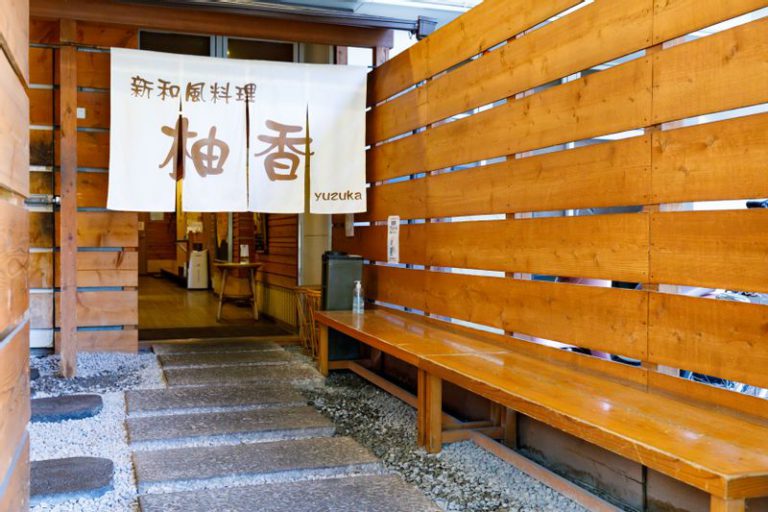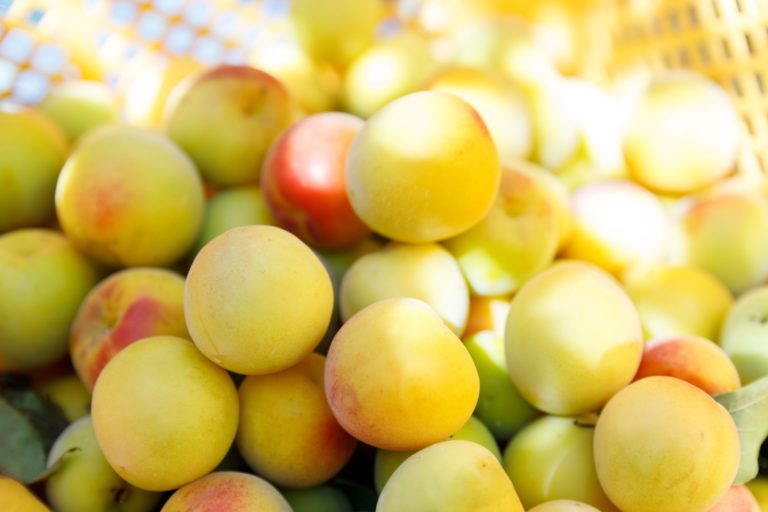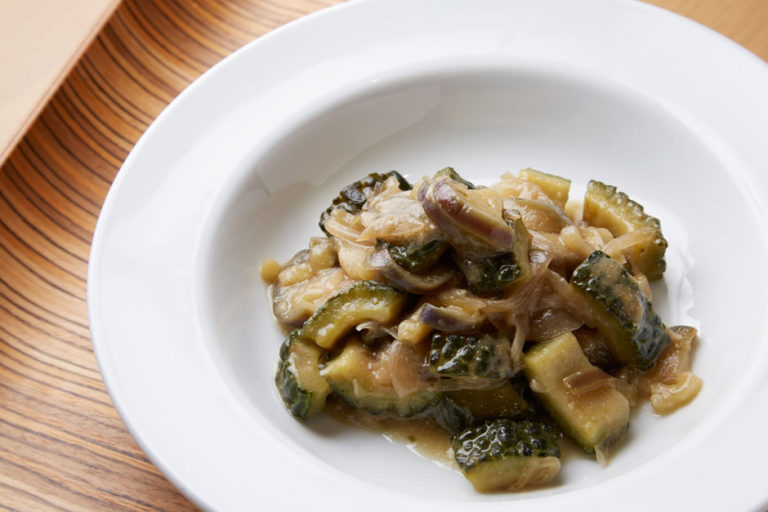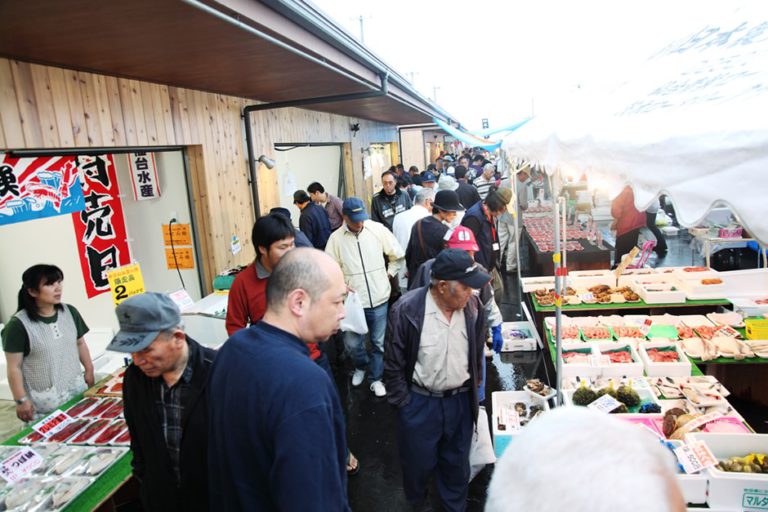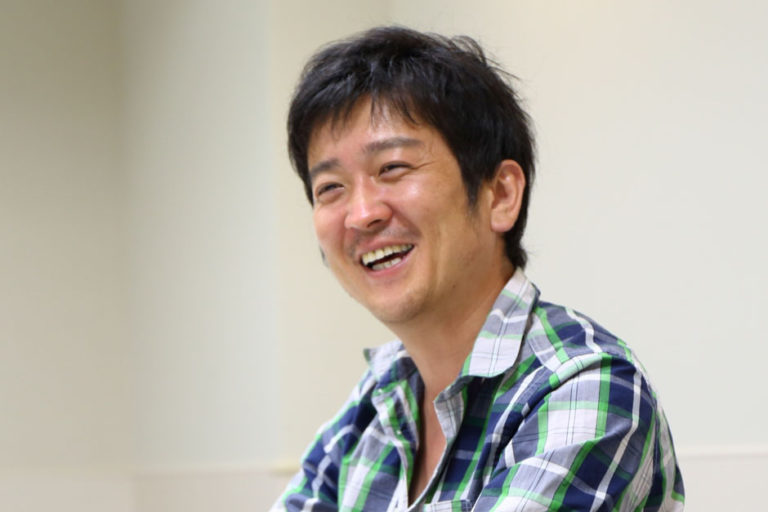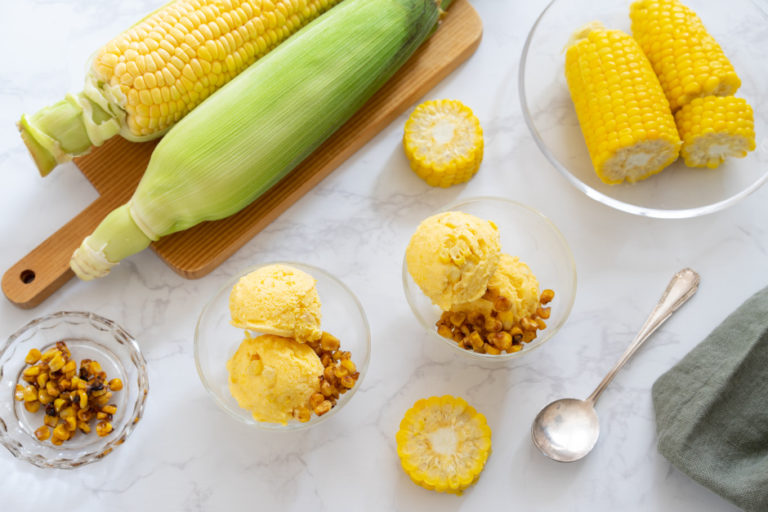A Day in Saikazaki: Hamo, a Gift from the Kii Channel
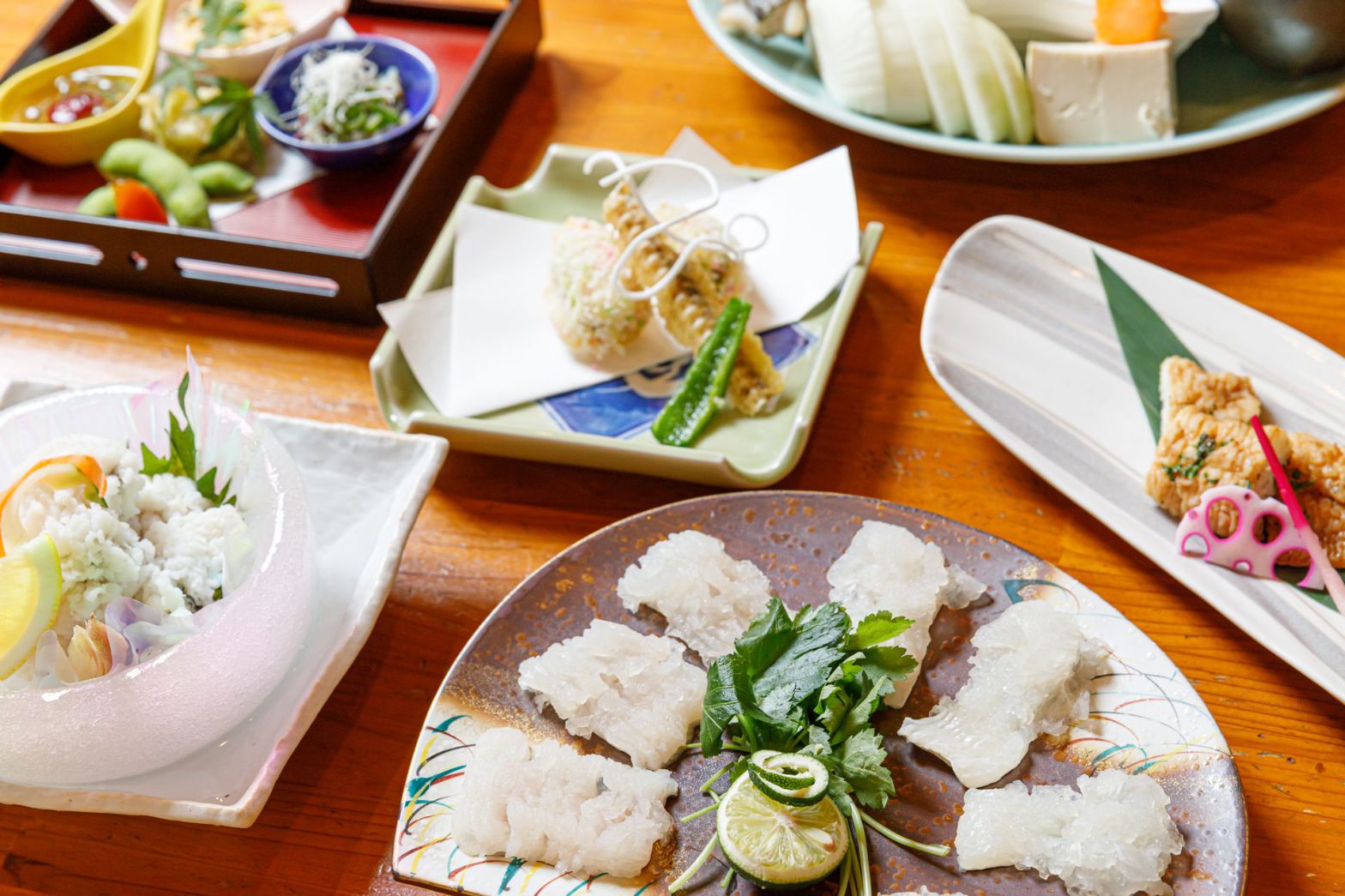
The birthplace of the one-hook fishing method, where a unique landscape and culture were established
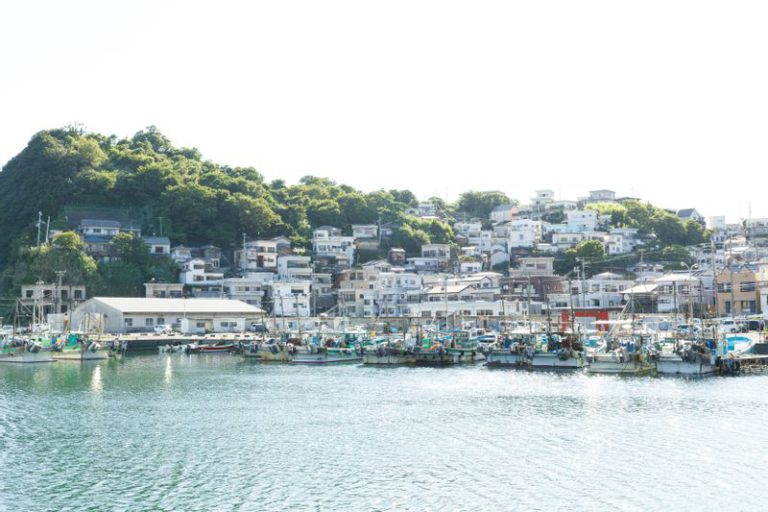
There is a town dubbed “Japan’s Amalfi.” It is in the Saikazaki district on the southwestern tip of Wakayama, Wakayama Prefecture. Looking up at the hills in the area against Wakaura Bay, you will see houses lined up along the hillside. It looks as if the cliffs themselves have been converted into residential areas. The spectacular view is reminiscent of Amalfi, Italy. When the sun goes down, the village’s lights appear in the mountains, creating an even more magical scene.
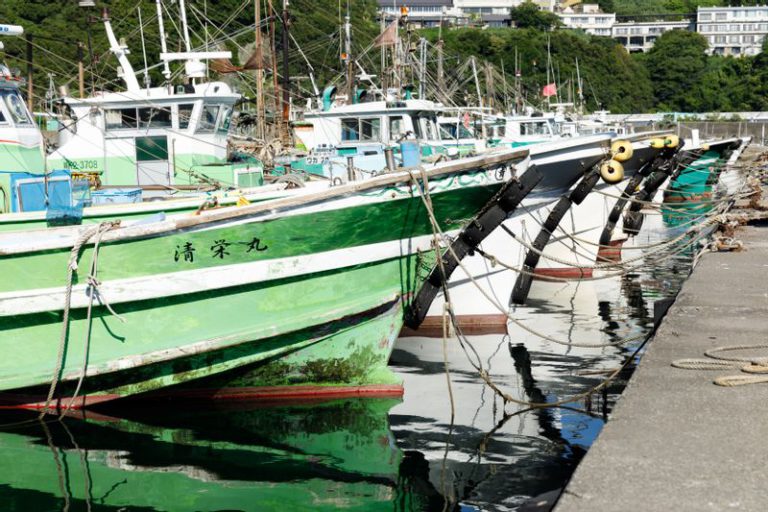
Like Amalfi, Saikazaki has been a fishing town for many years. The town is said to have originated in the Muromachi period (1336-1573), when fishermen in the fish net business established a village here. It is also the cradle of the single-hook fishing method. In the past, itinerant angling was practiced by fishermen who lived on boats and traveled to seas in various regions.
Today, trawlnet fishing in neighboring waters centered at the Saikazaki fishing port has become the mainstream. Although the culture of itinerant fishing has died out, some customs are still deeply rooted in the local community. One example is the Nakamae self-help group of fishermen. There are groups called Nishi-no-cho, Naka-no-cho, Ikeno-cho, and Higashi-no-cho, and the captains are assigned to one of these groups based on their hometown.
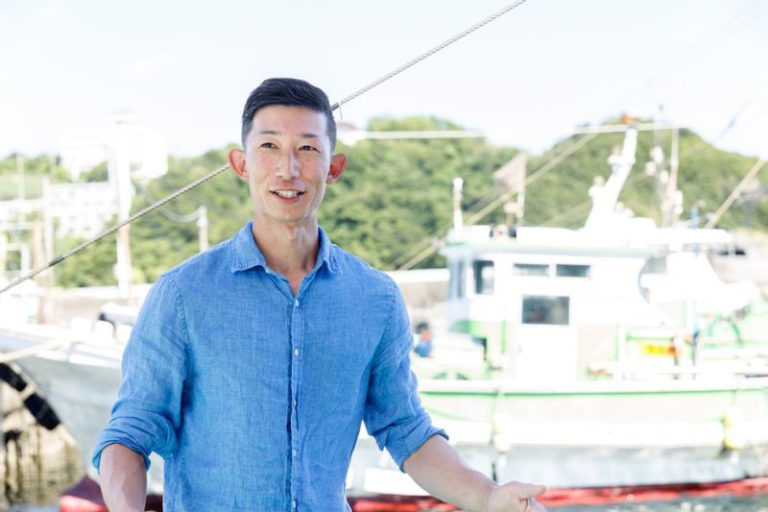
“Nakamae are like communities that share the same destiny. We help each other when working on nets and in times of trouble, breakdowns, accidents, etc. No one gets greedy and goes solo,” says Keisuke Ikeda, who runs a fishing business in Saikazaki.
He returned from Osaka in 2020 to take over the family business. While honing his skills under his father Katsuhiko, he also runs a guesthouse, “Fisherman’s Table & Stay Shinchiya,” in the area.
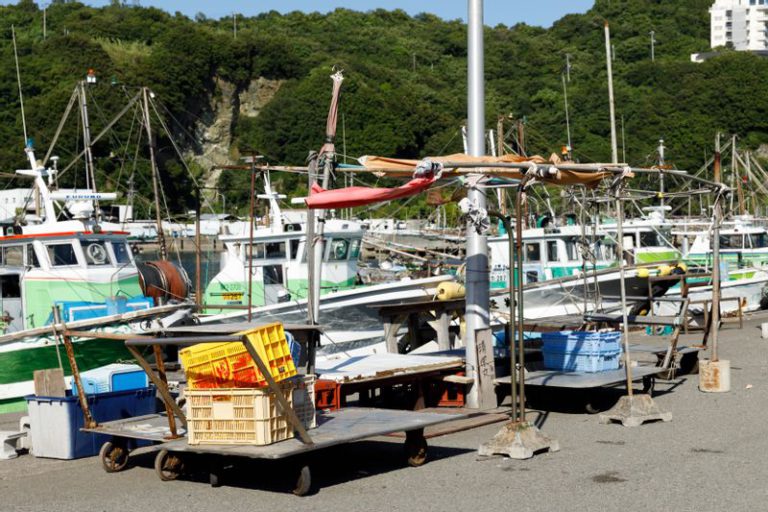
The hata uri at the docks is a new custom that started around 2010, shortly before Ikeda took over the family business. It refers to fishermen selling their catch directly to customers, with stalls lined up in front of fishing boats shortly after they return to port. Professional chefs sometimes join ordinary customers to buy freshly caught seafood at reasonable prices. The interactions between the fishermen and the women are also enjoyable, with the fishermen saying, “We have something rare today,” or the customer asking, “Tell me how to cook this fish.”
The idea for this impromptu market grew from the inability to hold auctions due to a lack of human resources. Although a desperate measure, the fishermen now have the right to set the prices. The event has become a local specialty, well-loved by people in and outside the community.
Hamo from the Kii Channel reaches its peak shipping season in the summer
The Kii Channel is the primary fishing ground for Saikazaki’s fishermen. The area stretches about 50 kilometers from north to south between the north-western part of Wakayama Prefecture and the eastern part of Tokushima Prefecture. It forms part of the Seto Inland Sea and opens to the Pacific Ocean south of the shoreline connecting Cape Hinomisaki in Wakayama and Cape Kamoda in Anan, Tokushima Prefecture.
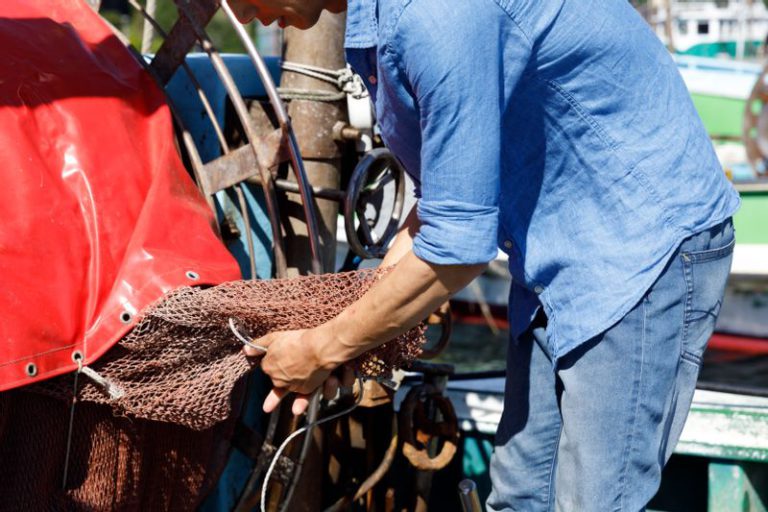
According to Ikeda, Saikazaki uses two types of trawlnet fishing: itakogi, practiced from June to November, and ishigeta, practiced during the rest of the year. What is the difference between the two?
Ikeda explained: “The key to itakogi is the steel plates attached to both sides of the net. When this net is thrown into the water and pulled by a fishing boat, the steel plates resist the water, causing the net to unfurl. Ishigeta, on the other hand, uses a net with rake-like claws. These claws scrape sand and mud from the seafloor to catch hiding fish.”
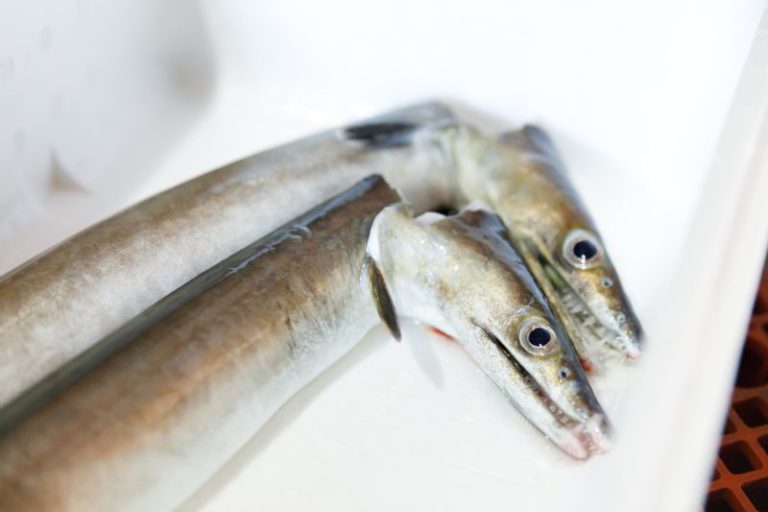
From May to October, hamo is also caught in trawlnets. Although the word hamo conjures up a refined impression as an ingredient well-known in Kyoto cuisine, hamo itself is quite ferocious. It has a long, slender body similar to an eel, bulging eyes, a large, gaping mouth, and sharp teeth. It looks like a monster.
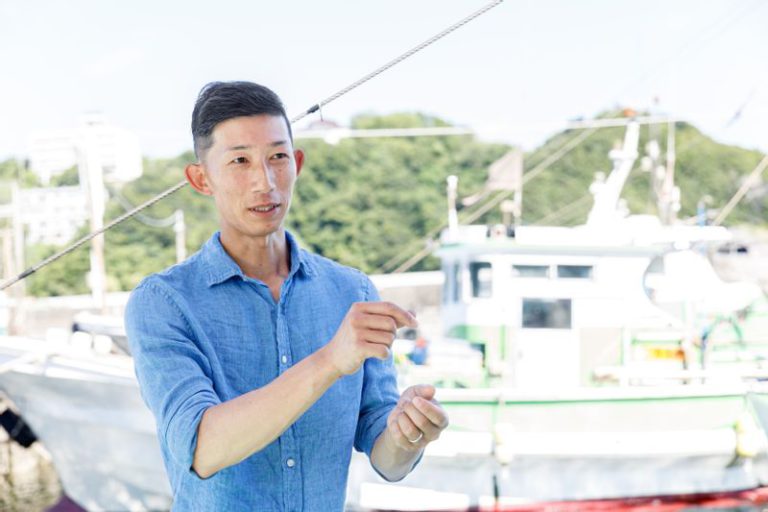
“We often catch them after the sun goes down and darkness falls when fishing with a trawlnet at a depth of 60 meters or so. They become so aggressive that we struggle to get them out of the net,” said Ikeda.
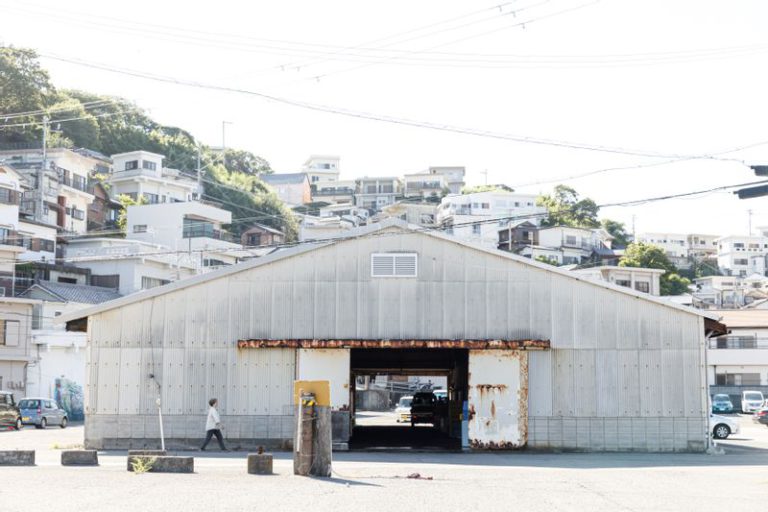
Ikeda was kind enough to allow us to witness the ikejime (a method of killing fish to maintain its quality) of hamo. He showed us to a warehouse in the corner of Saikazaki Fishing Port. It serves as a fish repository and a workplace and contains a large fish tank.
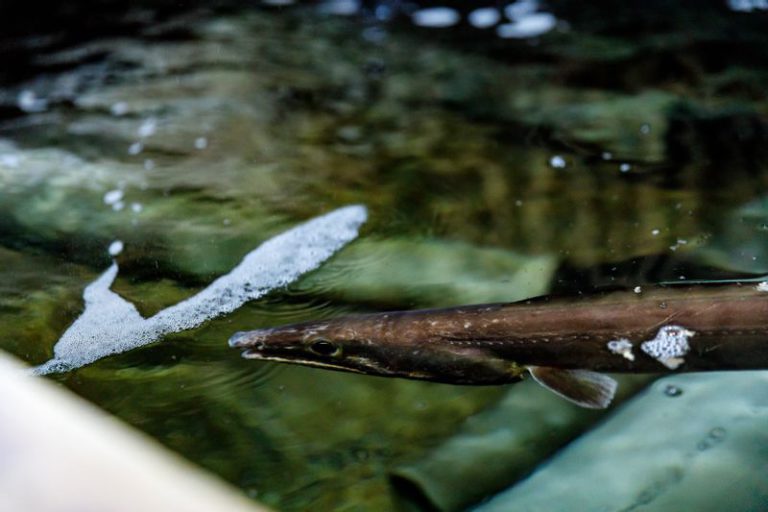
The fish tank was filled with running seawater, and the pipes at the bottom served as habitats, and several of them quietly lurked in the pipes on this particular day. They had been starved for about two days, so their stomachs were empty. This process is said to eliminate the fish’s odor after they are killed.
“Let’s go with that one,” said Ikeda. The hamo that caught Ikeda’s eye was about one meter long. Larger ones can grow to nearly two meters, but he said smaller ones are tastier.
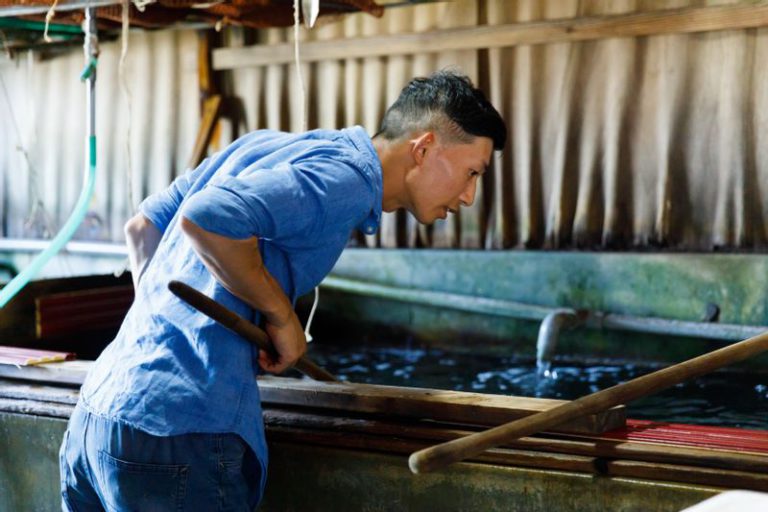
Ikeda took a breath and put his hand on the pipe in the fish tank. He pulled it up to the very surface of the water and caught the hamo with a spoon net just as it slid out. At that moment, the hamo went berserk. It splashed seawater as if it was about to jump out of the spoon net.
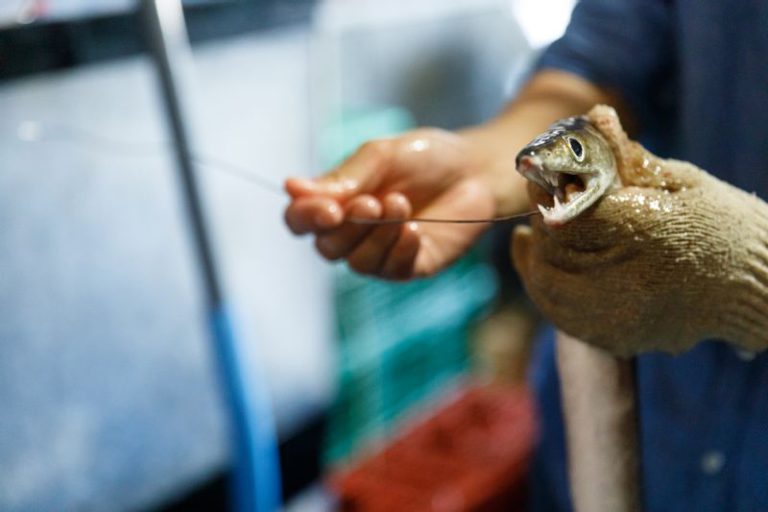
“I’m always on my toes,” Ikeda said. With that, Ikeda grabbed the hamo by the base of the neck and placed it on the cutting board, trying to dodge its movements. To sever the blood vessels and drain the blood, he quickly inserted a knife from the neck to the tail end of the hamo to sever the bones. He then passed a wire from the cross-section to the spinal cord to kill the nerves. The hamo was still slithering. It is surprising that, according to Ikeda, “even if you cut off the body from the neck, it still bites.
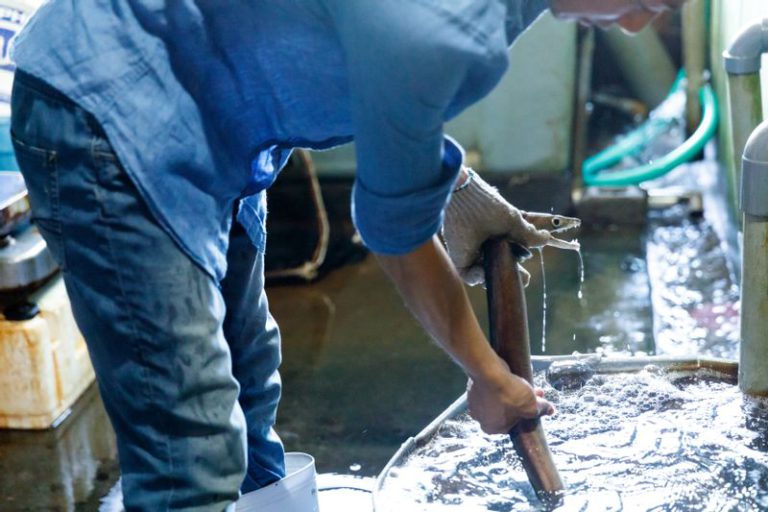
Continuing, he drained the blood out of the hamo by cutting the blood vessels, removing the nerves, and exposing it to water. After removing the sliminess from the surface, the process was complete. That day, he killed two hamo and delivered them to a traditional Japanese restaurant in the city.
Hot pot, boiled, and teriyaki… Savor the full flavor of hamo
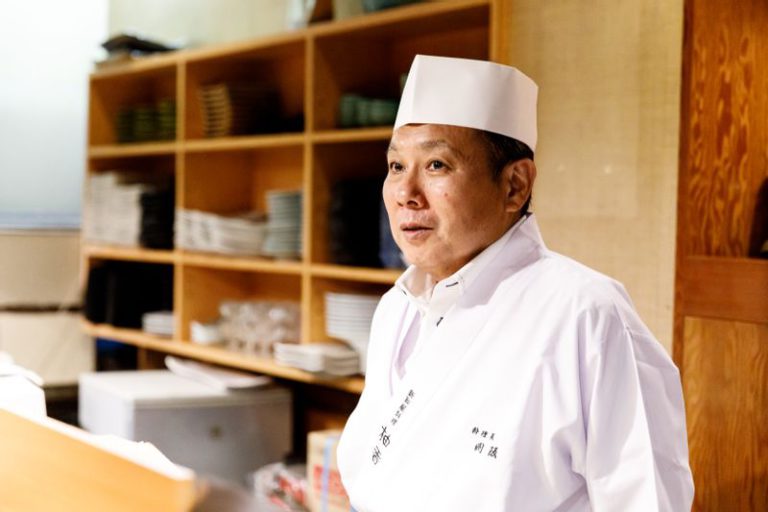
Wakayama has many restaurants where you can enjoy fresh hamo. One such restaurant is Shinwafu Ryori Yuzuka. Hamo dishes typically appear on the menu from around June each year. According to the chef, Hirofumi Okasaka, “We can’t omit hamo at this time of year. Our regular customers look forward to it every year.”
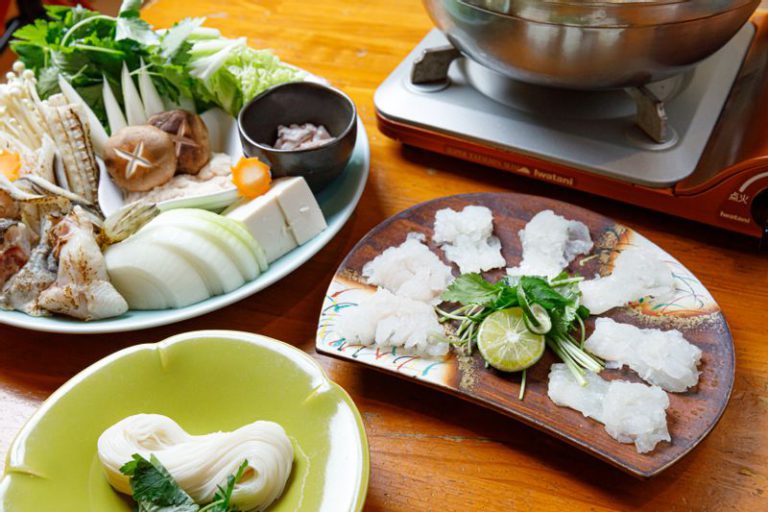
On this day, we were served the “Minazuki Hamo Suki Multi-Course Meal” (reservation required), a particularly popular menu item. The sumptuous meal included a Hamo Suki Nabe featuring rare cuts of hamo such as the stomach, liver, and roe, a teriyaki with sweet and savory sauce, and a fried mijinko made with rice flour.
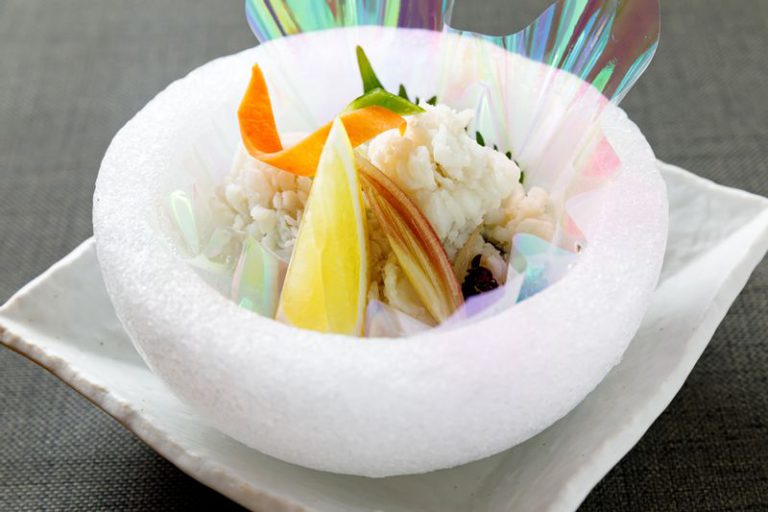
The most eye-catching dish was the boiled hamo served in an ice bowl. The beauty of the white meat and the magnificent presentation were a sight to behold. The piece of hamo curved back with its flesh appearing as if it had blossomed was proof of the time and effort that went into the preparation.
Okasaka explained, “Hamo has many small bones, making it unsuitable for eating as is. So, before cooking, you must finely cut the small bones with a knife to ‘debone’ them. It requires skill to cut through the bones without gaps while leaving the skin intact.”
After taking a slice into my mouth, I agreed with his words. It was soft and fluffy, with barely a trace of small bones. It may seem light, but the umami spread through my mouth as I chewed it. The delicate sweetness became even more pronounced with the Nanko ume plum paste that came with the dish as a condiment. Its depth of flavor, which did not get lost no matter how it was seasoned, left me in awe.
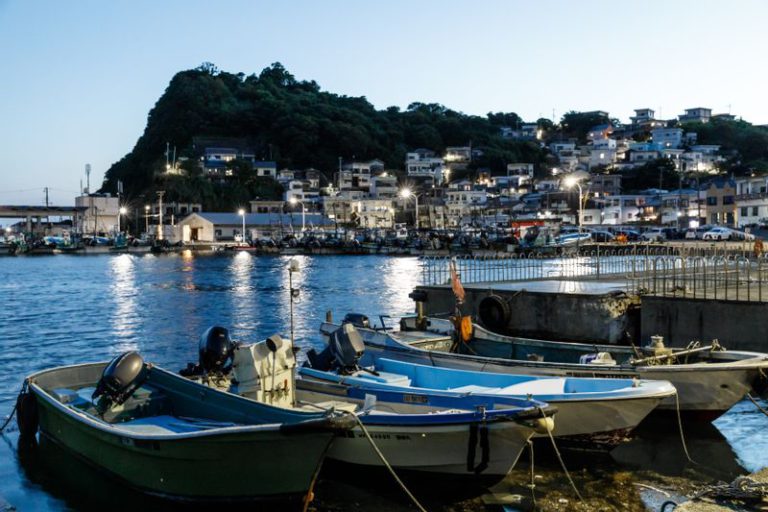
“The truth is, hamo cuisine has a rich repertoire. That’s why it’s worth the effort. Hamo in Kyoto has a certain charm, but I’d like people to try it in Wakayama, where it comes from,” Okasaka said.
Each place has its own flavor. A visit to the production area will reveal the hidden charm of hamo.

